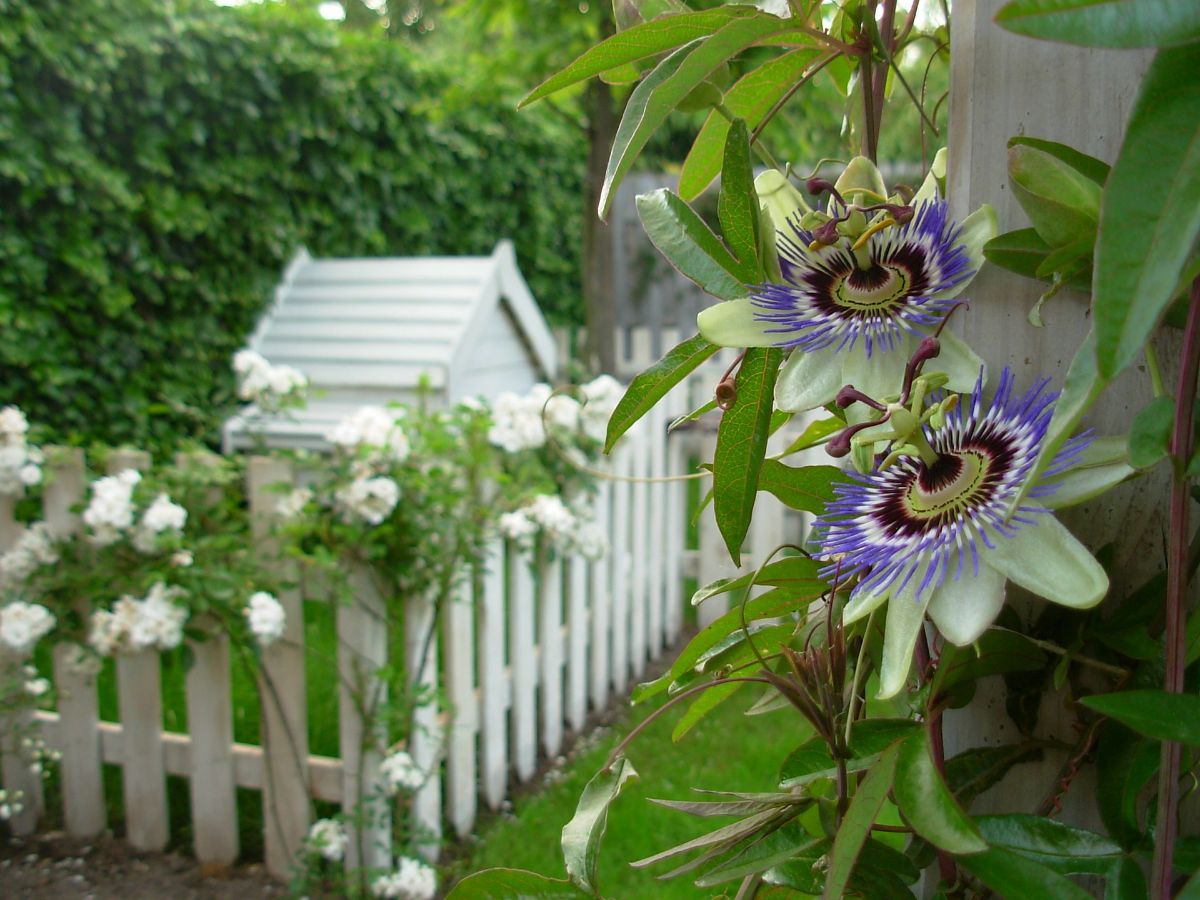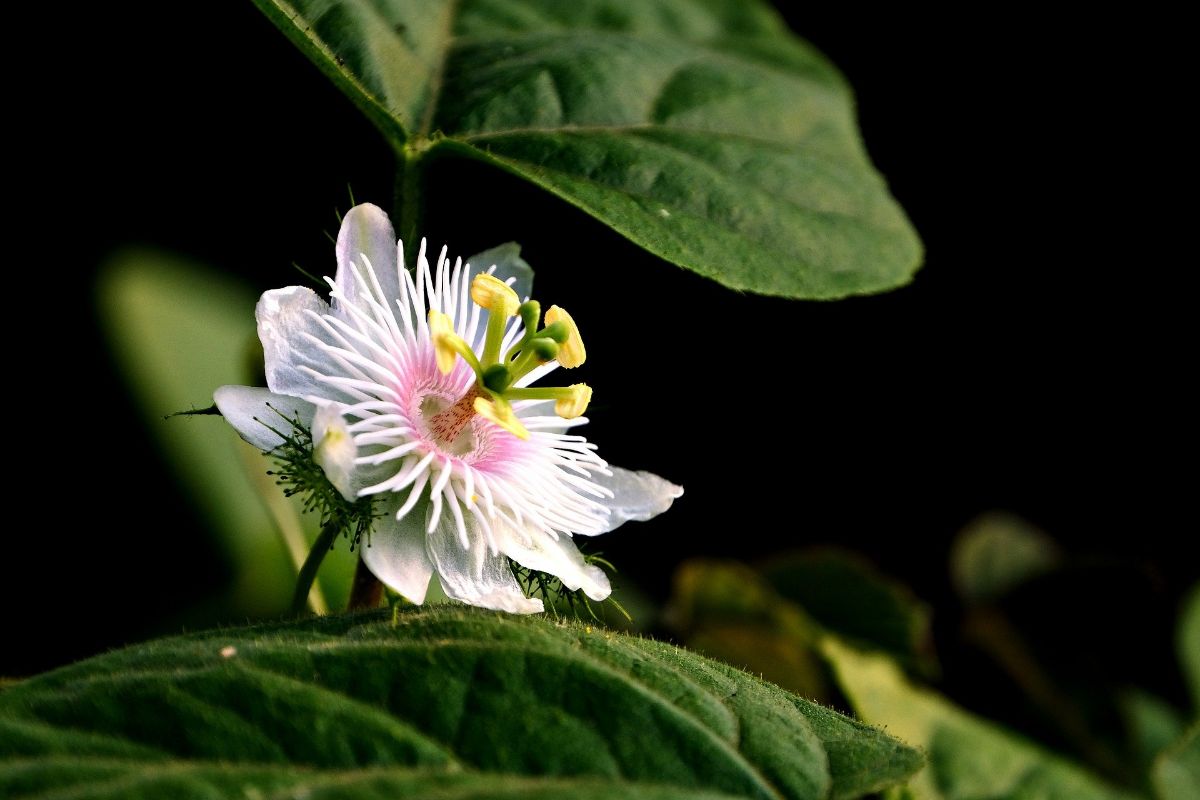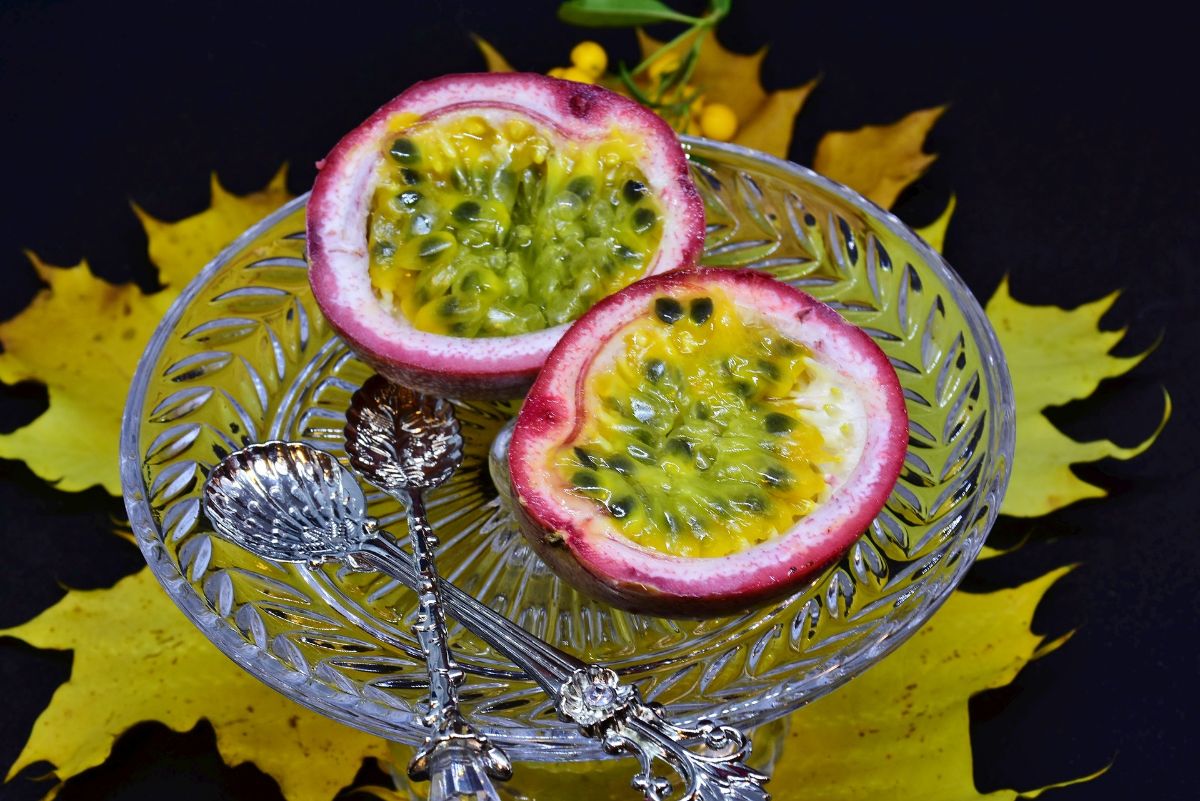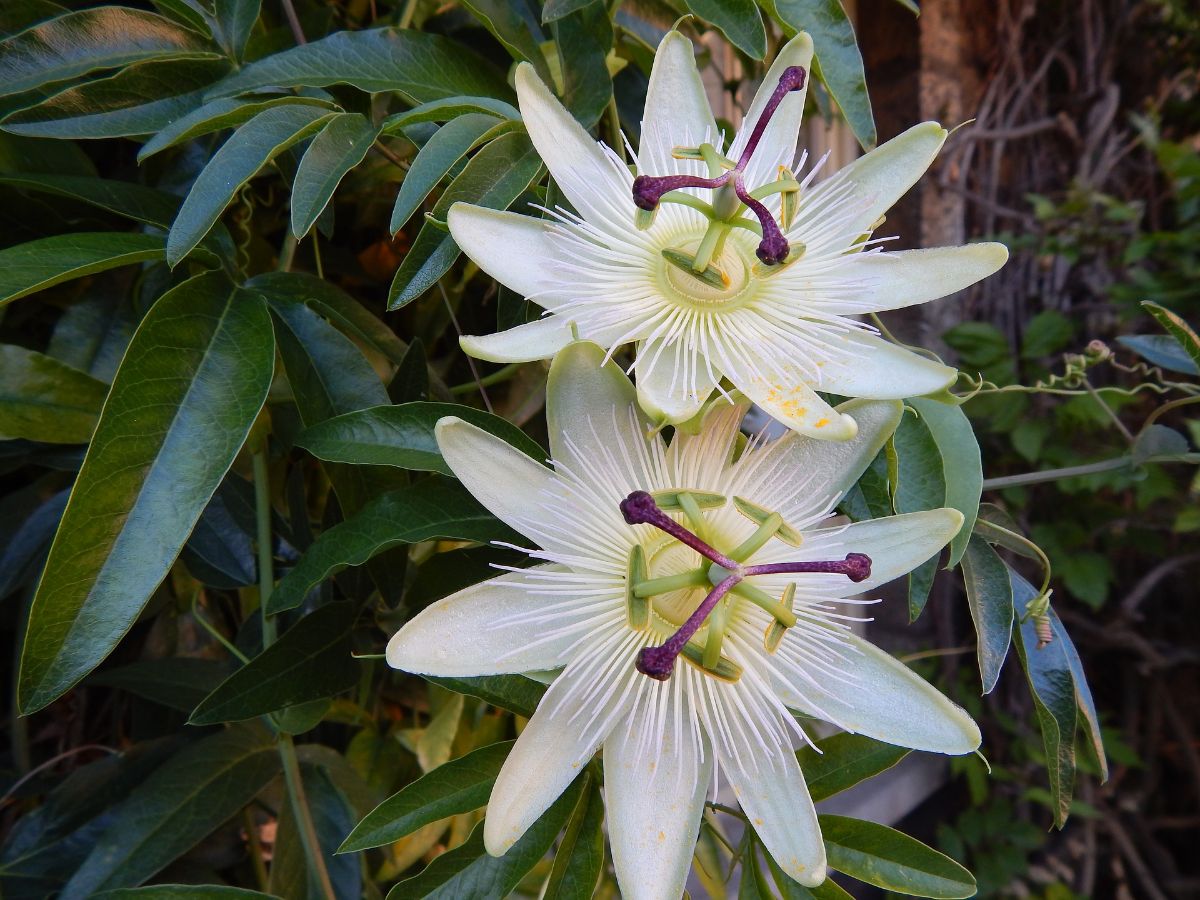
One of the plants that had its peak a few years ago, and that many discovered and wanted to have in their gardens, is the passion flower. Its fruit is one of the most appreciated and it was because of its exotic name that many began to know this climber.
But how is the plant? What fruit does the passion flower bear? What uses does it have? If you are wondering, we have the answer to all those questions.
How is the passion flower

Also known as Passiflora (and in some cases, Passionflower), this plant is of the climbing type and there are hundreds of different species in the world. They are tropical, but the truth is that there are many that, as hybrids, adapt to any environment, whether wet or dry. It can reach 2-4 meters in height, but especially in length.
What not many know is that Passiflora, or passion flower, does not always bear fruit. That is why when you throw it away it is a joy because you will have fruits every year.
Physically, the plant has a more or less wide trunk from which several vertical branches emerge and from them other smaller twigs that bear the leaves. It does not stop growing upwards but its branches are thin and there comes a time when they are overcome by the weight, hence they need a grip to hold on. And how do they do it? The plant itself, along with the leaves, develops fine threads that are responsible for "tying" to the area where you have fixed it.
It is very invasive, to the point that It covers the area of the wall where you put it quite well. But it also spreads fast and can threaten the space of other plants. Not so much at the level of roots, but also at the level of space on the wall.
As for its flowers, it is normal to have white petals, followed by a circular one between bluish and violet, another white, another purple and ending in another yellow circle with black spots that give way to the center of the flower, between yellow and dwelling. When it dries, if you are lucky, you will have a fruit.
How is the fruit of passion

Passion fruit, passion fruit, passion fruit, granadilla... The truth is that the passion flower bears a fruit that has multiple names.
It is a rounded fruit that, when ripe, is orange or yellow. Inside it there are a lot of seeds but the pulp that protects them is one of the richest and sweetest in nature.
It has a tropical flavor and it is not necessary to remove the seeds because they are very small and are mixed with the pulp.
When Spain arrived in America and discovered the passion flower, its flowers were what caught their attention the most and they assumed that they were symbols of good luck. In addition, they related it to the stages of the life of Jesus Christ (the crown of thorns, the chalice, the spear...). Hence, in some places, in addition to the names we have mentioned before, they also call the fruit crown of Christ.
What are the uses of the passion flower and its fruit
Despite that the fruit is a food, and therefore edible, besides that some give aphrodisiac properties, The truth is that it has more uses.
For example, it is perfect for calming down. Having a passion fruit or passion fruit will help you relax if you are nervous or hyperactive and can't stop. It is also great for lowering blood pressure.
But not everything stops there. The flower and the leaves can be used to make an infusion that helps to fall asleep. and even as a substitute for analgesics, because it helps to relieve pain.
That same infusion is used to soothe menstrual cramps, symptoms of menopause or for Parkinson's tremors.
In case of headaches or body aches due to emotions It also acts and functions as an infusion that is very easy to make.
What care does the Passion flower have?

If everything we have told you has convinced you to have a passion flower with fruit in your home, then surely you can find somewhere to buy one. The plants in your garden and… Do you know what care it needs? Don't worry, we'll explain them below.
Location
This climber can be both planted in the garden and in a pot. That said, its ideal location will depend on the species you have planted, as there are some that like to be in full sun and others in semi-shade.
You can even have it inside or outside the home. But always in well-lit areas and, if possible, with a pleasant temperature.
Temperature
Again, depending on the species, you will come across some that they tolerate heat very well (ideal for the southern part of Spain) and others that are not. What you do have to be careful with is the cold.
In general, they adapt, but the first years it is convenient to protect them from low temperatures. To do this, you just have to focus on protecting its roots (with a blanket of dry leaves above the ground, for example, or a blanket that covers its base).
Irrigation
Despite being an exotic plant, here it differs in care. There are specimens that require the substrate is wet weather, so you have to water often in summer, and 1-2 times in winter.
But there are also others that do not need as much water, and with 1-2 times in summer, and in winter 1-2 times a month is more than enough.
Fertilizer
Yes, she is grateful for the subscription. Experts recommend that you put every 15 days a liquid fertilizer mixed with the water.
Pruning
Pruning is constant. We are talking about a fast-growing plant, so it is normal that you should be cutting to prevent it from invading other areas where you do not want the plant.
In general, they are perennial plants, but some varieties can be deciduous, so the end of winter is used to cut it and rejuvenate it.
Plagues and diseases
The main ones you will find are the Red spider, aphids and mealybugs. All of them can be treated, but it is important to detect them in time to avoid greater evils.
Do you have more questions about the passion flower and its fruit? Ask us and we will try to give you an answer.
They just gave me a plant, if you planted it in the garden, it goes well, on the ground, I made a square of pipe so that it tangles like the Vine, it works
Hello Vera.
Sorry, I misunderstood you: do you have a vine and a passion flower growing on the same support?
If so, I recommend that you separate them, as they are both fast growing plants, and if left unchecked, they will both do their best to shade the other, thus inhibiting their growth.
Greetings.